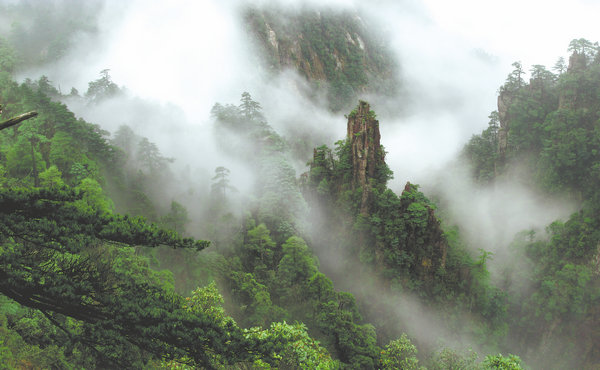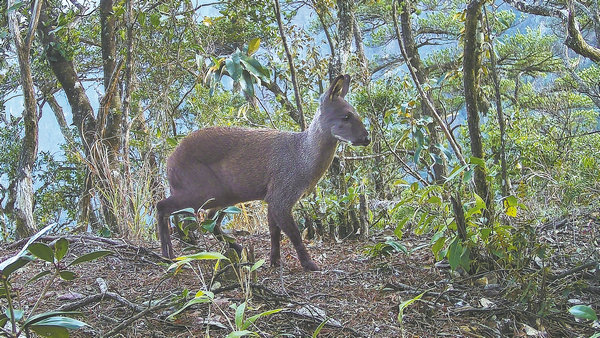Cameras discover secrets of Mangshan
Infrared monitors capture footage of elusive musk deer in Hunan reserve


On a morning in May 2020, Chen Desheng, an engineer at the Mangshan National Nature Reserve's science and public education department, was fixated on the computer screen in his office, watching a video clip of a creature with a round, black backside scratching itself against a tree stump without a care in the world.
As the animal turned its head, Chen's eyes widened in surprise.
The creature had a body resembling a small deer, with olive-brown fur, large fluffy ears, a short stubby tail and two tiny tusks protruding from the sides of its mouth.
"It looks like a forest musk deer!" he thought to himself in astonishment.
Until that moment, the Mangshan reserve had never recorded this endangered and rare species, which is renowned for secreting musk and is classified globally as an endangered species. In 2003, it was upgraded to a first-class national protected animal in China.

The infrared camera was set up by Chen in January of that year and captured five video clips of the animal in February. Chen collected the data in May.
Excited by the discovery, Chen sent the videos to the Hunan Provincial Forestry Department. The experts there were equally thrilled.
"It was lucky to capture footage of a forest musk deer with an infrared camera, but there might be an even bigger surprise," one researcher told Chen.
The forest musk deer found in other parts of the country typically had distinct white or orange patches on their lower jaw, throat, neck and chest. However, the one captured in Mangshan lacked these features, suggesting the possibility of an undiscovered subspecies.
To verify this hypothesis, the Mangshan management bureau dispatched all members of its research personnel to search the mountains for physical traces of the forest musk deer, such as droppings, hoofprints and fur, in hopes of conducting genetic tests.
"Years have passed, and we have yet to find any physical evidence of the animal," Chen told China Daily.
However, infrared cameras scattered throughout the reserve have captured images of the elusive species several more times.
Chen has been a main conductor of the reserve's camera monitoring project. His proficiency in this technique and his deep understanding of the reserve's biodiversity have largely been self-taught over the years. However, he is not the first grassroots conservation expert to emerge from the reserve.


































